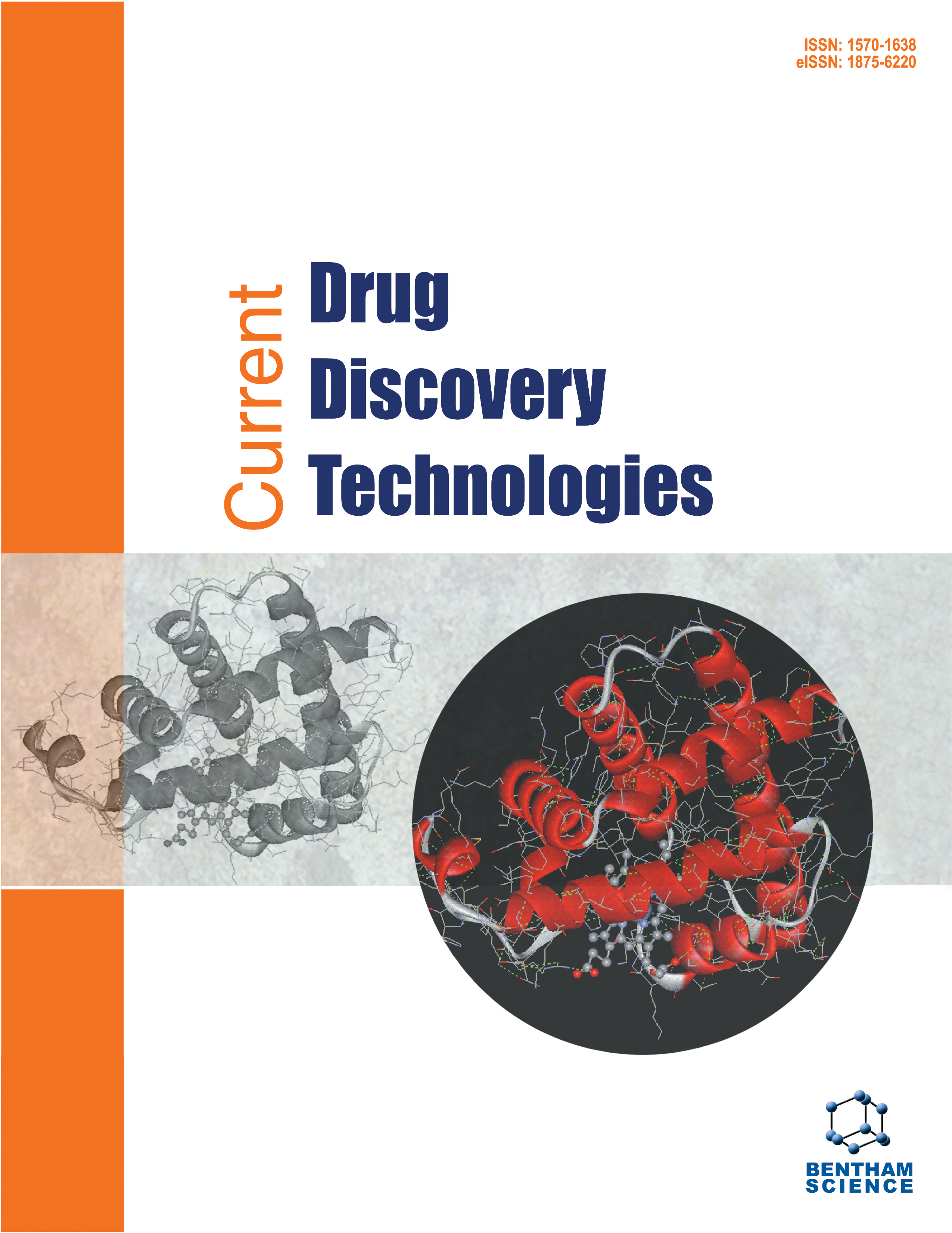- Home
- A-Z Publications
- Current Drug Discovery Technologies
- Previous Issues
- Volume 12, Issue 2, 2015
Current Drug Discovery Technologies - Volume 12, Issue 2, 2015
Volume 12, Issue 2, 2015
-
-
Coumarins as Potential Inhibitors of DNA Polymerases and Reverse Transcriptases. Searching New Antiretroviral and Antitumoral Drugs
More LessAuthors: Hugo A. Garro and Carlos R. PungitoreHuman Immunodeficiency Virus (HIV) is the viral agent of Acquired Immunodeficiency Syndrome (AIDS), and at present, there is no effective vaccine against HIV. Reverse Transcriptase (RT) is an essential enzyme for retroviral replication, such as HIV as well as for other RNA infectious viruses like Human T lymphocyte virus. Polymerases act in DNA metabolism, modulating different processes like mitosis, damage repair, Read More
-
-
-
Thymoquinone Anticancer Discovery: Possible Mechanisms
More LessMedicinal plants are known for their many advantages, including the ability to treat diseases such as cancer. Nigella sativa and its active constituent thymoquinone (TQ) have long been used in traditional medicine for treating various conditions related to the respiratory and gastrointestinal systems as well as breast, colorectal, gastric, hepatic, pancreatic cancers and leukemia. TQ has been documented to possess chemo-pr Read More
-
-
-
Discovery Approaches for Novel Dyslipidemia Drugs
More LessAuthors: Faheem Maqbool, Malihe Safavi, Haji Bahadar, Mahban Rahimifard, Kamal Niaz and Mohammad AbdollahiIntroduction: Dyslipidemia is increased fasting level of total cholesterol (TC), LDL cholesterol (LDL-C), and triglycerides (TG), along with decreased levels of HDL cholesterol (HDL-C). Owing to effect on the cardiovascular system and increased chances of metabolic diseases, it is needed to review novel under development drugs and new approaches in drug discovery for dyslipidemia. Areas Covered: This article reviews all phases I Read More
-
-
-
Reliability of Virtual Screening Methods in Prediction of PDE4Binhibitor Activity
More LessAuthors: Victoria Shubina, Sanna Niinivehmas and Olli T. PentikainenIdentification of active ligands using computational methods is a challenging task. For example, molecular docking, pharmacophore modeling, and three dimensional quantitative structure-activity relationship models (3D-QSAR) are widely used methods to identify novel small molecules. However, all these methods have, in addition to advantages, also significant pitfalls. The aim of this study was to compare some commo Read More
-
Volumes & issues
-
Volume 22 (2025)
-
Volume 21 (2024)
-
Volume 20 (2023)
-
Volume 19 (2022)
-
Volume 18 (2021)
-
Volume 17 (2020)
-
Volume 16 (2019)
-
Volume 15 (2018)
-
Volume 14 (2017)
-
Volume 13 (2016)
-
Volume 12 (2015)
-
Volume 11 (2014)
-
Volume 10 (2013)
-
Volume 9 (2012)
-
Volume 8 (2011)
-
Volume 7 (2010)
-
Volume 6 (2009)
-
Volume 5 (2008)
-
Volume 4 (2007)
-
Volume 3 (2006)
-
Volume 2 (2005)
-
Volume 1 (2004)
Most Read This Month
Article
content/journals/cddt
Journal
10
5
false
en


